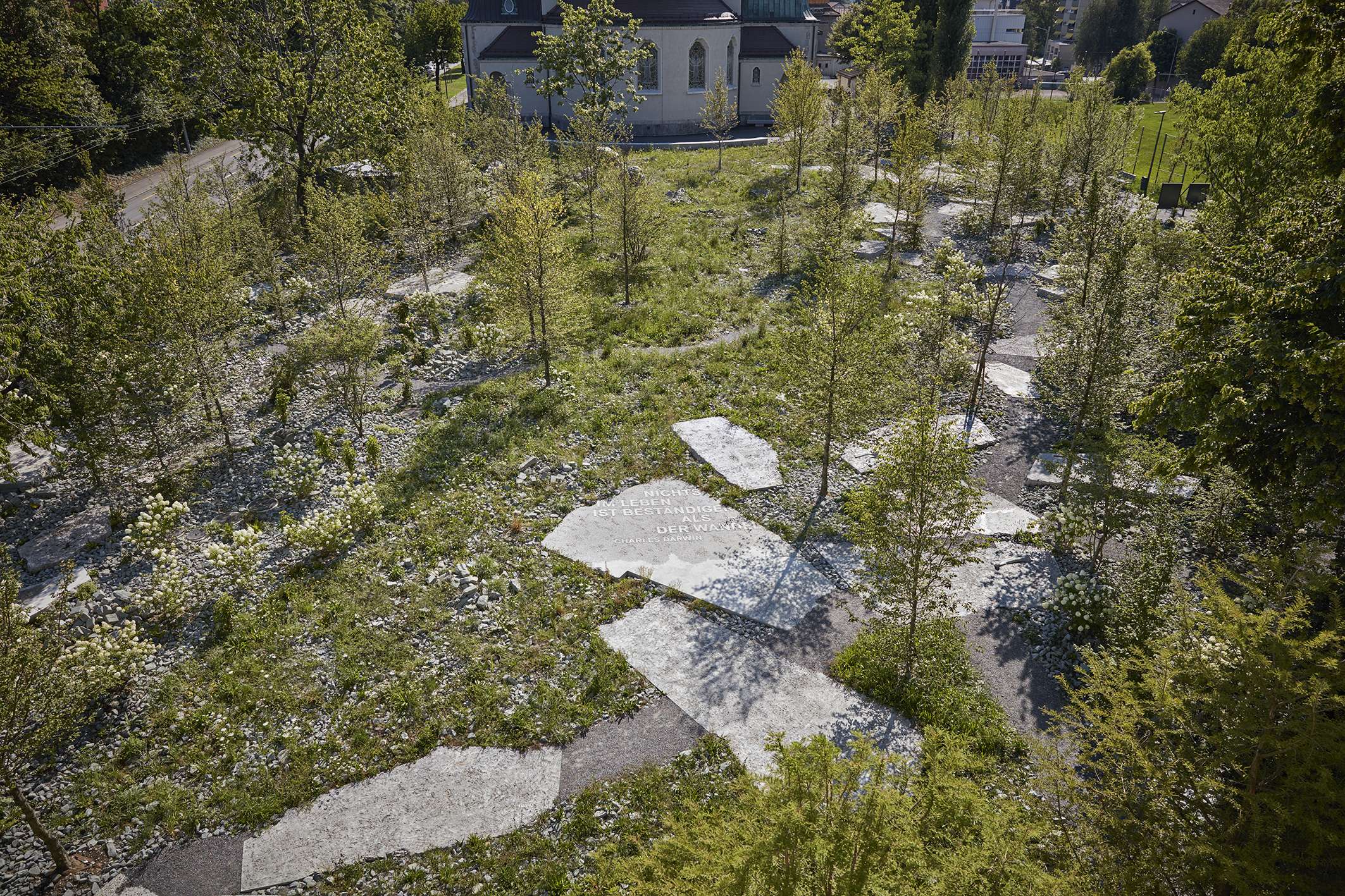
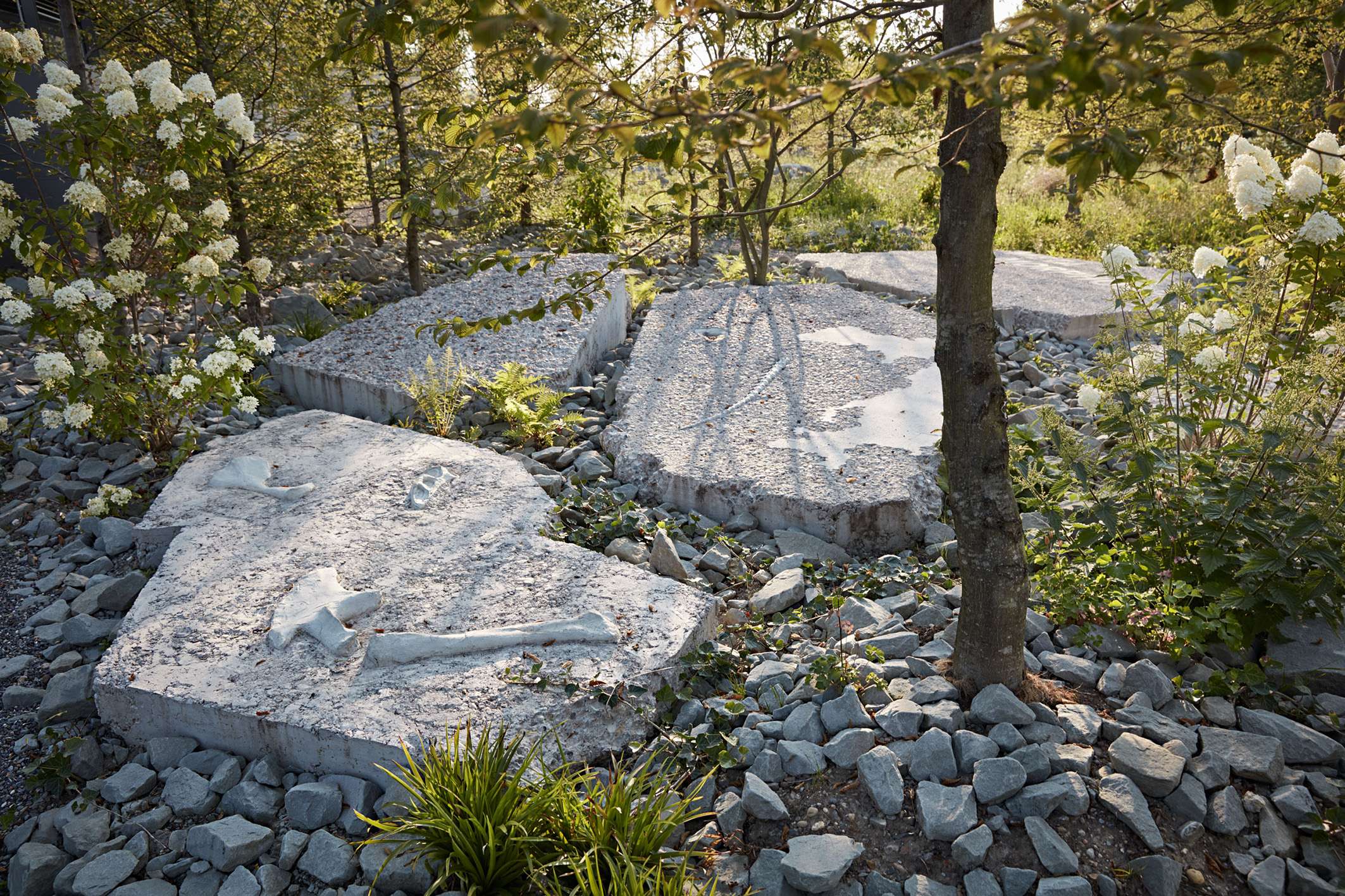

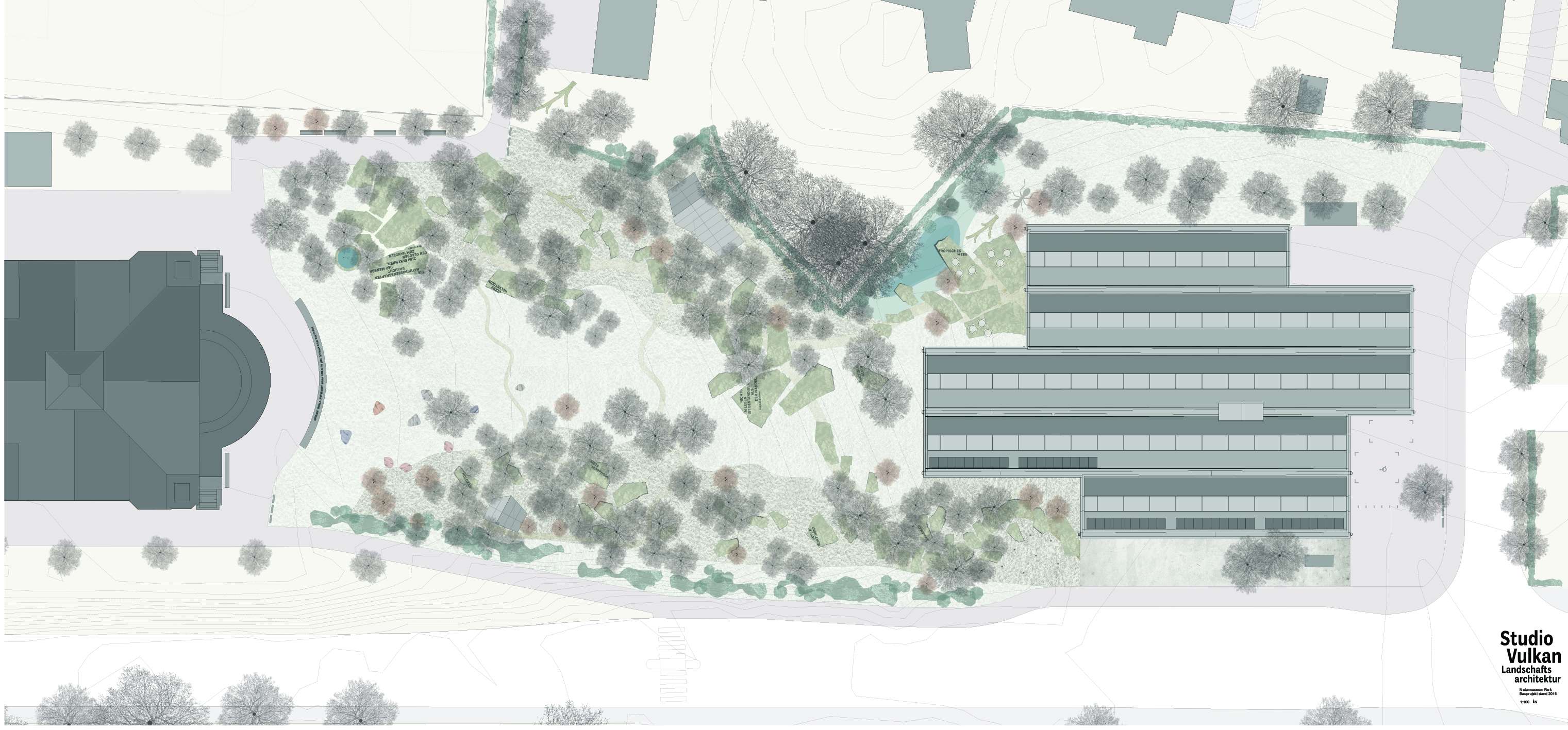
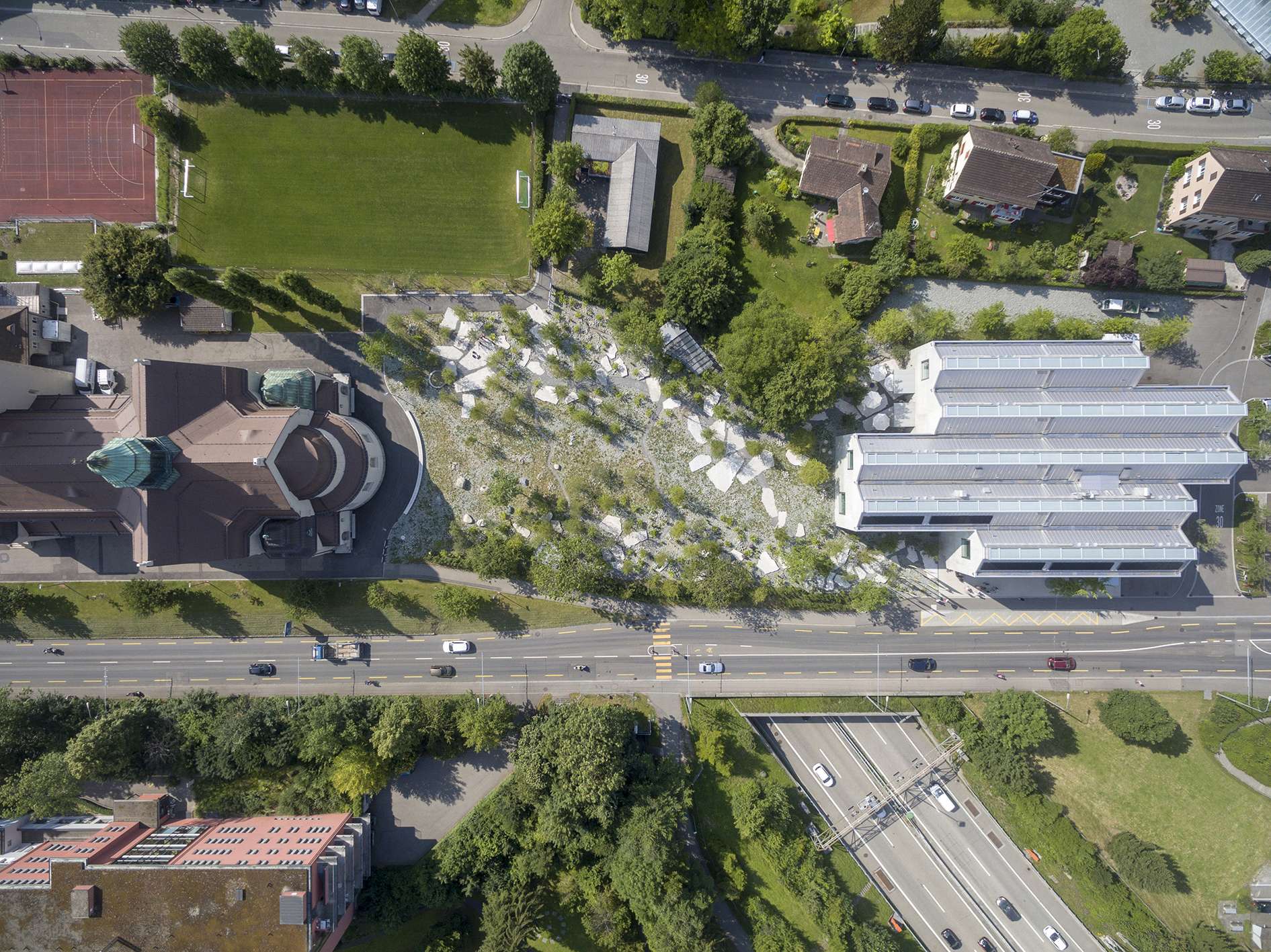
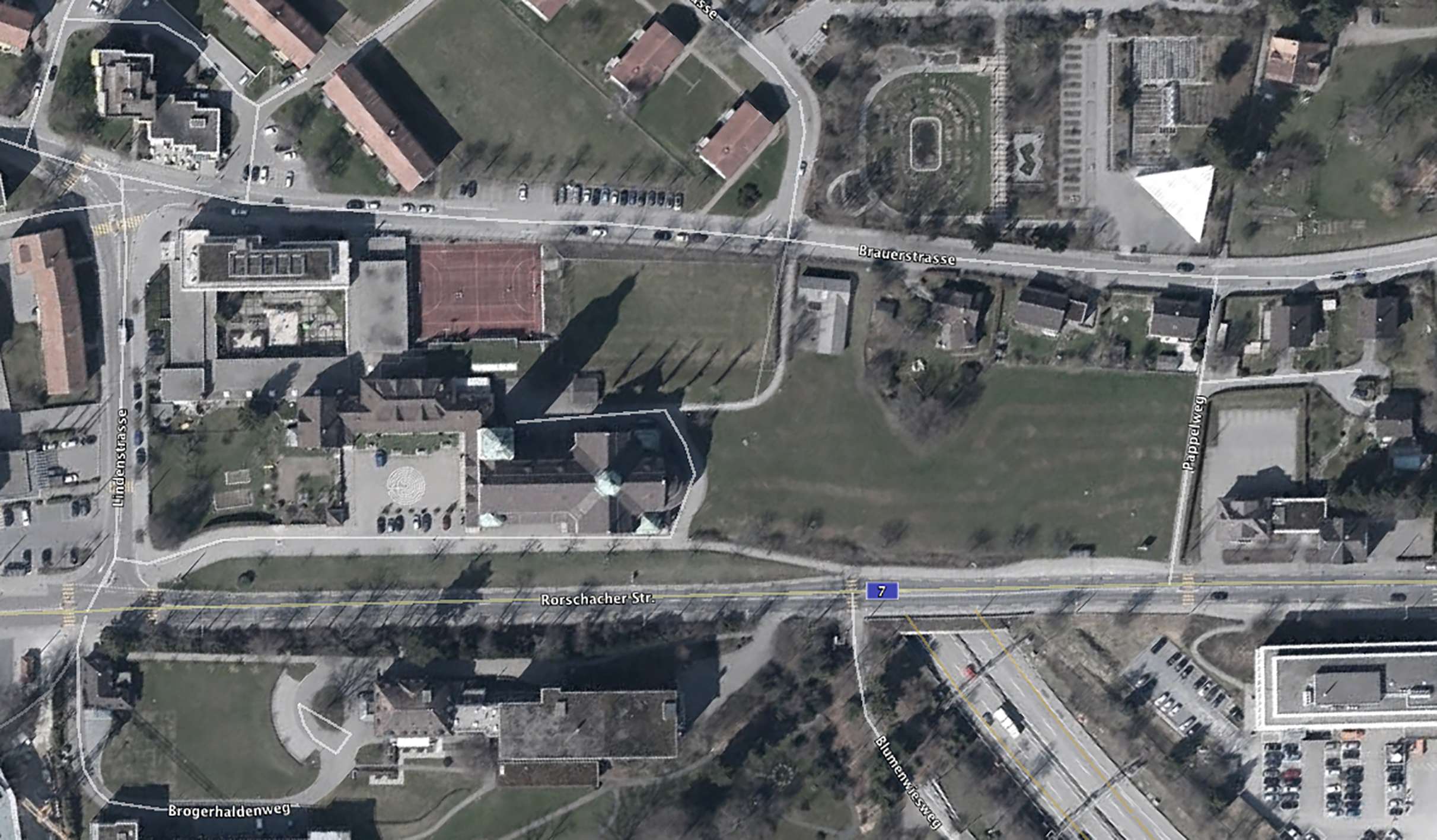

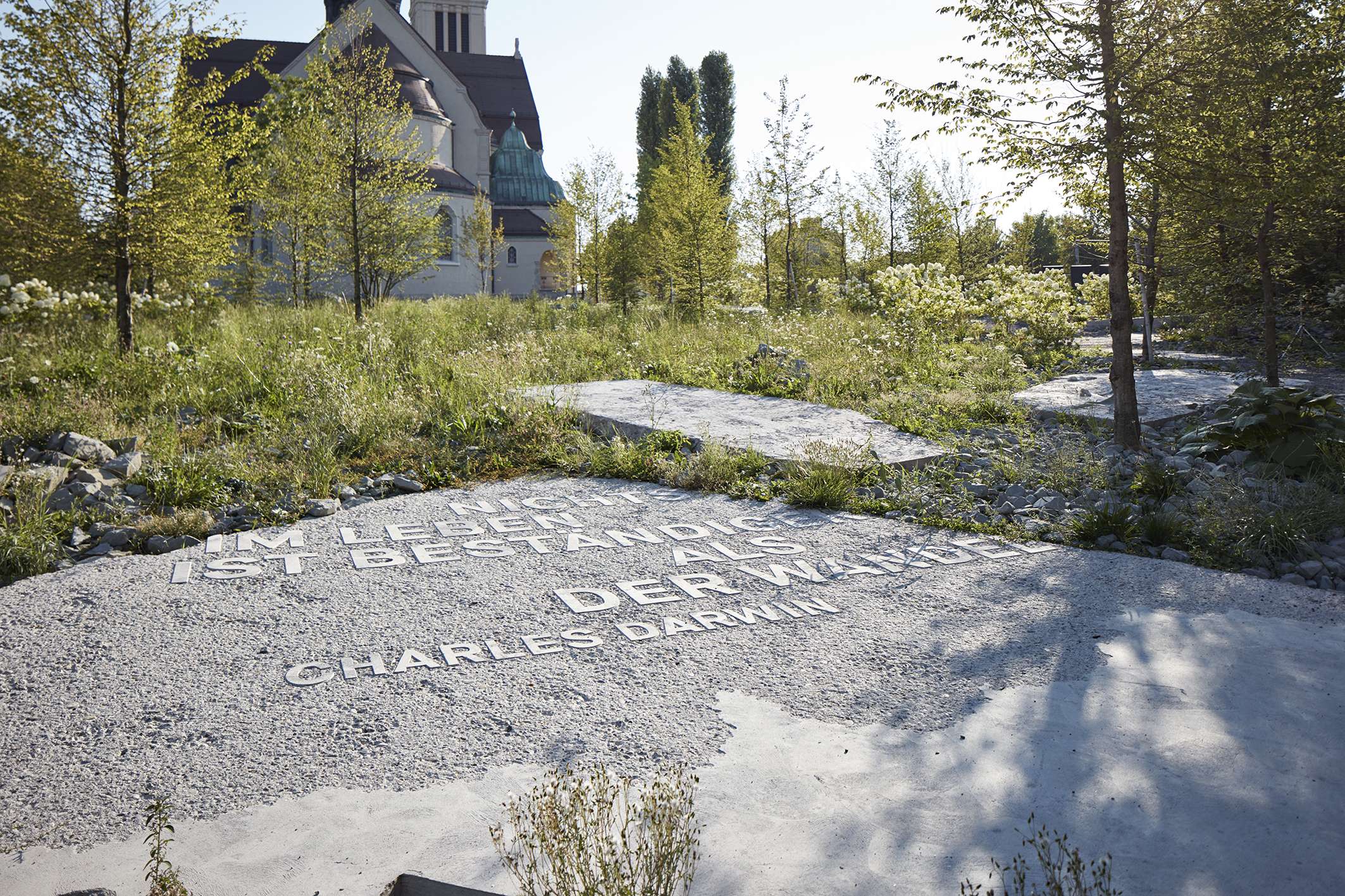


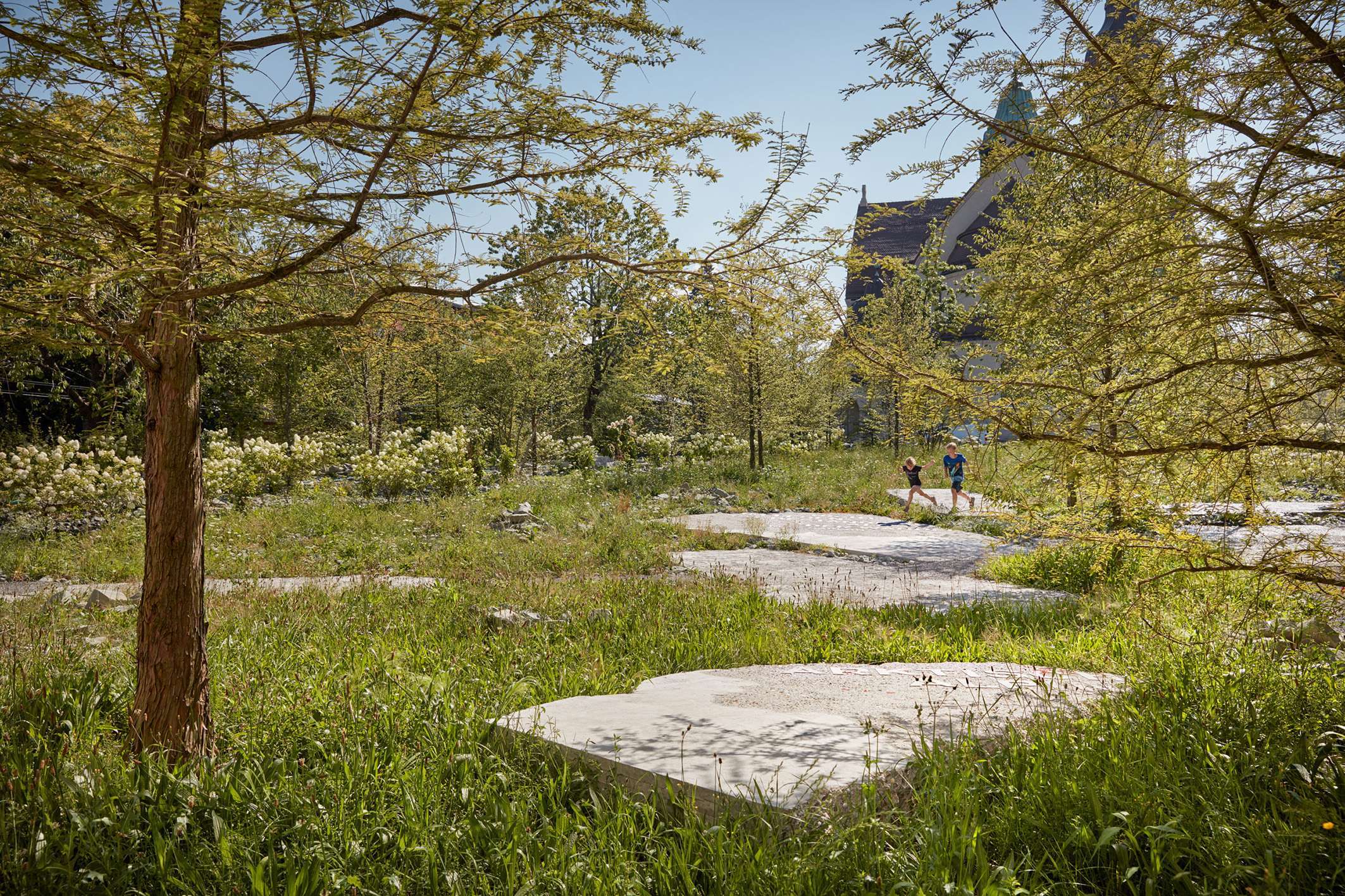
Parque del Museo de Historia Natural de San Gallen, Suiza
Parc del Museu d'Història Natural de Sant Gallen, Suïssa
Natural History Museum Park, St Gallen, Switzerland
The site of the park exemplifies the Swiss landscape paradox where, infrastructure, suburbs and bucolic idyll are densely interwoven. So the challenge: how to design a park inspiring contemplation about natural history ironically located atop a highway tunnel, surrounded by the loud, heterogeneous urban periphery? At a time when concepts like nature or landscape no longer possess a clear meaning, the park explores the theme of artificial naturalness/natural artificiality.
An atmospheric woodland backdrop with lush groundcover filter out the context, allowing visitors to immerse themselves into the park’s play on themes of nature. Enormous concrete “stepping stones” bear poetic and scientific messages, functioning as both path and exhibition. Strewn mysteriously within the park are giant chiseled quotes and local geological terms, fossils and massive glacier exotics. Unlike the linear pedagogical approach inside of the museum, the park engages our curiosity and imagination about time and transformational processes of natural history.
A series of natural “riddles” relate to geology, vegetation, philosophy and culture.
The regional conglomerate stone, Nagelfluh, is identical in make-up to man-made concrete. The concrete pavers appear both slammed and identical to nagelflüh and imprinted with man-made materials. Regional sandstone, present in all historical buildings makes up the raw groundplane of the entire park and is sculpted into cultural artefacts. Three significant geological eras of Eastern Switzerland encapsulate geological history for young and old, for example, that St. Gallen was once a tropical ocean is seen in texts, trees, shark and dinosaur fossils. Quotes from the Bible, Max Plank and Charles Darwin express the parks location set between museum and a church telling the two theories of the world’s creation, religious and scientific.
The small, raw suburban park is rapidly transforming into a tiny wilderness. Museum directors and visitors, school classes, teenagers, local residents, children and elderly have each appropriated the space in their own way. Complaints from ecologists about the few non-native plant species have disappeared as the vegetative qualities of the park take form.
